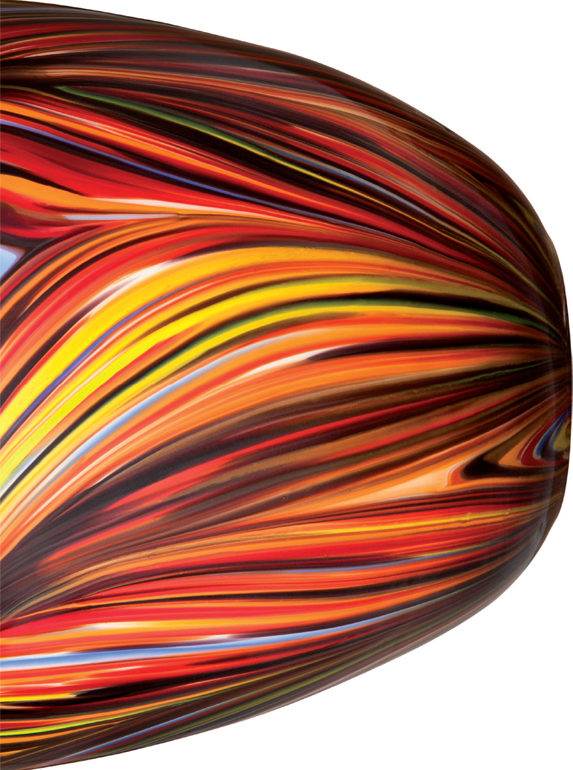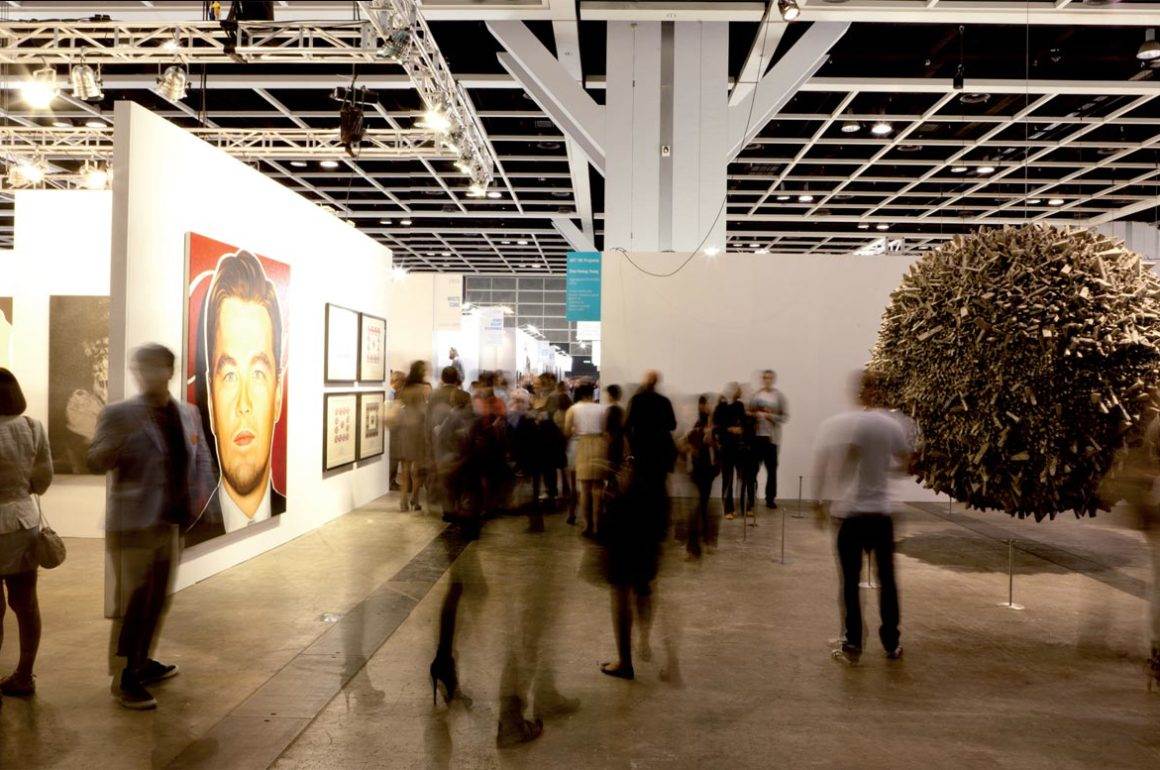NOW HAS A THRIVING HOMEWARE BUSINESS AND IS LAUNCHING SELF-DESIGNED HOTELS AROUND THE WORLD. LUX EDITOR-IN-CHIEF Darius Sanai CATCHES UP WITH ANGELA MISSONI, CREATIVE DIRECTOR AND DRIVING FORCE OF THE BRAND, OVER COFFEE IN KNIGHTSBRIDGE
DS: What is the key to your longevity?
AM: I often ask myself the same question, I think it is a miracle. I think really it is because my parents invented the style. I was lucky enough to inherit style from them and was able to revamp it and make it fashionable again. Missoni was not only a zigzag and it isn’t only a zigzag. It is a style, a colour base, they were pioneer in many things in fashion. The palate of Missoni is vast in terms of patterns and colours, I’m not scared in adding to it.
I’m never working on the past, I always work on the future. I never go to archives. I know the archives by heart, I was there. Every reference in my mind of my youth and growing up is related to a pattern, to a dress, to a person, to something related to fashion. If ever I ask to see something from the archive I tell them the precise year and I know exactly what I am asking for.
How do you stop everything from slipping into the past and keep it moving forward?
I use my instinct, with my knowledge of the pattern. I don’t have a recipe, I work by instinct which luckily has worked till now. I think I have courage. I was asking myself “how can I be so sure of what I am doing?” but I’m not, anymore. I like things and I go on. Season after season, I follow my instincts. There is something which is a continuation. Every collection has a precise identity but the research work never stops. There is a continuation. Maybe someone from outside can analyse better.
You have this reputation for being an earth mother… I like to live in the country. I like to come out of the country of course, but I do like to come back. I started an organic chicken farm 30 years ago, maybe that’s where the reputation started. The two things can go together.
Do you ever try to combine them?
What fashion and the chicken farm? No! Fashion is fantasy, you try to work with natural material, there is a comfort that has to be there for me in our clothes which is part of something. Those clothes have to make you feel better, or at least I hope that they do. I don’t look at trends. Either you see them or you don’t and you filter. I think I have good eyes. I see details that the majority of people don’t see. In a good sense as well as a bad sense, as you see defects everywhere. I see that there is a plug under the couch over there. I see when it’s dirty and I want it to be clean. I am very curious and I try to see as much as I can in general and I am attracted by many different things, I analyse everything and I translate it into my work.
Your mother lost interest in fashion, which is part of the reason she passed the business over to you. How do you stay engaged and interested in it?
My mother felt trapped. When she asked me to do the main line, she was tired of fighting with the commercial side. As soon as she stepped out of it, she said she wanted to retire. She has many other interests in life, but then she started with the Missoni home collection. She still does research. If she goes to a flea market, she will bring me something back so she hasn’t lost her passion for fashion. At the time she felt alone, fighting the commercial side, and she said to me “fashion you have to do when you are young and passionate, and you have the strength to fight with the commercial side otherwise they will ask you to always do the same thing that they sold yesterday.”
What keeps you inspired?
Sometimes you finish a collection and you are very tired. You might not even have the time to finish one before you start on the next. Sometimes you don’t know where you are. A little thing is enough to start it. You might see a small thing that opens the door again and you can start the process to go on. Of course, that’s what keeps you going on. I don’t only design fashion, me and my brothers own the factory and the brand. It means you are involved in all the processes, you have various things that can keep your attention alive all the time. When I see that my clothes are well received, I do have a sense of satisfaction. It is good to see that you are on the right track, so that you can go on. When I see that my daughters enjoy my clothes too, they are also very inspiring. [Angela’s daughter Margarita is an A-list model and unofficial face of the brand].
What does the Missoni brand mean?
It is fashion, but I would like people to think of it as more than fashion. It is artisanal, craftsmanship and many values. It is a brand with a very long history so that’s what I was trying to communicate. Sometimes I can hardly distinguish the brand from the family. Doesn’t mean that we all eat together everyday or that I see my mum everyday, I might see her three days in a row. I do talk to my daughters very regularly. At the moment my daughter is getting married so I seem to talk to her every 30 minutes! She was in New York for five years and one day I told her that instead of her having a phone she should have an intercom from New York and here because we speak so often.
What would you like people to think when they think of Missoni?
First thing is I would like them to have a smile. Then think of something positive. They should think beauty, joie de vivre, a lift in the spirit. You can think of art, of good food, dinner with friends. Family is not only family members, it is a large sense of family which includes your friends. A sense of hospitality. It started with my father at the very beginning. The first collection that my father decided not to show in Florence (which was in Palazzo Pitti) because he realised why go there when there was an international airport 15 minutes from the house. That was how the Milan fashion week started. Others followed. They were not showing in Milan, they were showing in the factory. That is incredible when you think of it today, but in 1970-1971, all the fashion crowd was 150 people from magazines to Bloomingdales and buyers from Hong Kong. My mother was organising lunch and dinner for them too.
What is the relationship between art and fashion for you?
Both subjects are the expression of the moment together with other forms, music and film, etc. I don’t think that fashion is an art but more of a craftsmanship. That’s what makes the link. We are talking the language of now or rather of tomorrow. Art also is an expression, an extract of what is now. This setting is the link.
With my work I just want my clothes to look beautiful, to give you something more. Art sometimes can be disturbing. I’m not going to make clothes that disturb you, so it isn’t the same process as art can be. I like the interaction with artists. More recently I have been asked by several artists if they can do a collaboration with us, which is very interesting. They want to work with us, with our materials. Last week I was asked by Nick Cave who I would love to work with. I would like to ask them what they think about Missoni. I wanted to work with Peter Blake, but I convinced Juergen Teller to have his photo cut out. No one touches a photo of Juergen Teller, but he let it happen. It was done at the Museum of Everything. We did a campaign inside the museum. For the summer campaign I put together Juergen Teller, Pedro Almodovar, Rossy de Palma. Everybody enjoyed it. Put creative talent together and shake. Artists are very much in their own world. Rarely you see them watching other artists. I had the image of Sergent Pepper’s Lonely Hearts Club Band in my head and I wanted to have an image like that with all our family.
My projects, I have to work fast. If I am working for a campaign I need to work with a very fast rhythm. From the show to the day you have to have the material in your hand, you have a month, a month and a half. You can start thinking before but not much because the collection is really defined when it is on the catwalk.
We did a movie with Kenneth Anger two years ago. Sometimes you think people are very hard to approach but actually it is very simple. Kenneth came and stayed five days with us.
How does the fashion side relate to the home, the hotels?
It relates because there are some patterns that can translate. What I like is that patterns in fashion stay there for 6 months or even less, but the same pattern you can put on an armchair and it has a life of 15 years. It gives you satisfaction. Certain patterns maybe are not instantly recognisable as Missoni, particularly from the outside, but they became Missoni classic designs.
You’re wearing some very cool accessories. Can you explain what they are for the benefit of our readers who can’t be here?
I always create my jewels myself. I don’t like to wear the things that other people wear. I do it instinctively. This is a souvenir chain with little presents, charms. It is a long chain from the beginning of the last century, I think it was meant for a monocle. I am wearing black trousers, black t-shirt, boots, and a sweater wrap. The earrings are the same. I was in Columbia at the end of the year and bought a little coffee grain from the airport, which I have hung on it too.
















Recent Comments